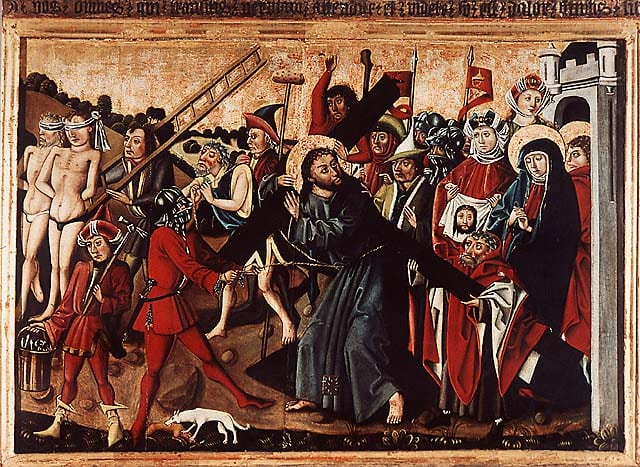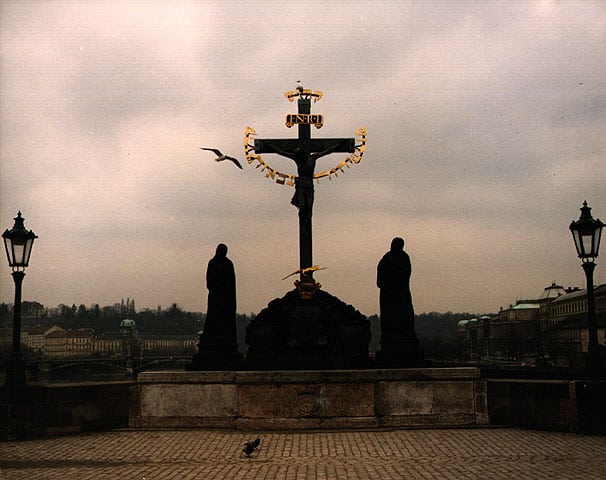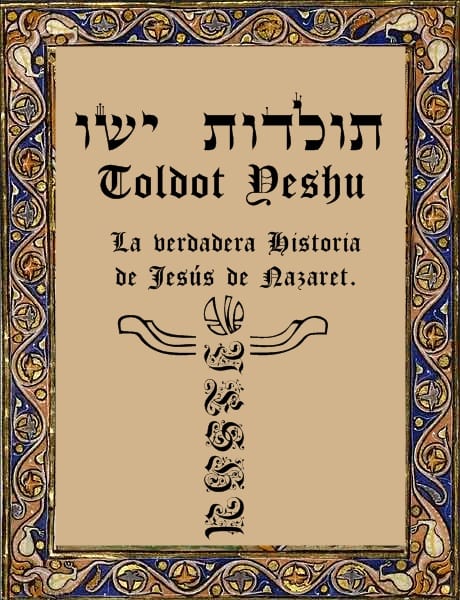In 1979, when the film “The Life of Brian” by the Monty Python group was released, it immediately provoked fury and insult, as Jesus Christ, rather than a saint martyr born to a virgin, was presented as a foolish loser who found himself in ridiculous situations and somehow made the Jews believe he was the messiah without having to perform one miracle whatsoever. Monty Python were not making fun of Jesus, but rather of religious and political extremism. However, the British group were not the first to create a parody on the life of Jesus. A whole millennium prior to Monty, an anonymous Jewish book titled The History of Jesus – “Sefer Toldot Yeshu” – was published in Europe.
As the title implies, the work describes the life and death of Jesus, though mockingly and disrespectfully. The story lies on the familiar plot from the new testament, but the Jewish editors chose to present Jesus as a shrewd, impertinent fraud. Little is known about the book itself, its authors or editors, and exact date of publish, it is assumed that it first appeared already in the 3rd century. By the 9th century the work was already formulated and widely familiar in various versions in Hebrew and Aramaic. Probably it was inspired by folk Jewish stories mocking the new testament, some of which exist until today.

Jesus’ character in the book is quite the opposite of the character described in the new testament. Instead of a saint born miraculously to virgin Mary and her husband, Joseph the carpenter, in “Toldot Yeshu” Jesus was born after Mary married another man, seduced and then raped – while menstruating – by her envious husband Joseph, thus, Jesus was in fact a bastard. Growing up, he is referred to as extremely wise, but also very insolent – he stole a page with the name of the Lord, and performed witchcraft with it. He did not do miracles because he was the son of God, but rather performed magical tricks because he was a wizard. It was not claimed that he performed trickery, but simply used the divine force in illegal ways.
At some points, the book introduces mocking versions of famous anecdotes from the new testament. For example, the miracle of the seven loafs of bread: it is told that Jesus begged a man to give him bread, and that person answered, only if you dance to me. Jesus then humiliated himself and danced to get the bread. In another episode, Jesus fabricated the story about his mother’s virginity birth – a story that milliards of Christian still believe until today – to cover up for the shame of being a bastard.

While in the new testament Judas Iscariot is considered a traitor, in “Toldot Yeshu” he is in fact the story’s hero. He does turn Jesus into the hands of the Jewish elders, but only to punish him for stealing the page on which the name of the Lord was written. The episode of Jesus transcending to the sky is told like a misunderstanding in a sitcom: after the crucifixion, Judas takes Jesus’ body to be buried respectfully in a casket. Jesus’ disciples, upon reaching the crucifixion site and not finding the body, are certain that their master has miraculously gone up to heaven. Even after Judas shows them the dead body inside the casket, all covered in feces, they still do not believe.
In her study on the book, Prof. Ora Limor explains that for the Jewish authors, while Jesus was a scorned figure, he was not necessarily a villain. With his dubious pedigree, and his low social status which determined his bleak fate, he resembles Greek tragedy protagonists, while Saint Peter, a sacred figure for the Christian, is like some Jewish protagonist. Though the work mocks the Christians, it also expresses a sort of acceptance of their existence alongside the Jews.

“Toldot Yeshu” is a mysterious and problematic work, until today. Throughout history, Jews hardly mentioned this dangerous document, fearing that the Christians might be offended and use it against them. In the 12th century the Christians started to scan carefully for Talmudic literature that disrespected Jesus, in order to undermine the status of the Jews as a minority that deserved their protection, and to deal with that interfering minority more strictly. Naturally, the Jews feared that should “Sefer Toledot Yeshu” be revealed to the Christians, they will have yet another excuse to persecute the Jews.
And this fear could not be more just. Since the late middle ages, as the book was discovered and read by many Christians, including thinkers like Martin Luther, they used it as evidence to the Jewish treachery and contemptibly. In the modern age, even some Jewish scholars resented the book and claimed it was better for such a rude parody never to be published. But we can look on the book from another perspective. The Jewish-Christian literal debate was mostly profound and serious, discussed among the intellectual elites. “Sefer Toledot Yeshu” teaches us that the controversy also took place among the lower, popular genres, which the leadership wished to conceal.
Further reading (in Hebrew):
יהדות מתבוננת בנצרות: פולמוס נסתור הכומר וספר תולדות ישו / אורה לימור